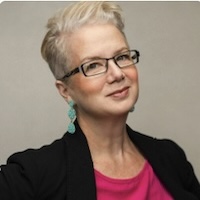J.C. Penney Co. Inc. is touting a new and improved spring/summer big book and targeting it to their core customer.
The company reported that its catalog and e-commerce sales decreased 20.1% in December.
The catalog has been redesigned to feature “coordinated, lifestyle looks” among product groups, said Stephanie Brown, J.C. Penney, spokesperson. Also, each category of product is labeled with colored tabs, so a reader can find her place quickly.
The goal is to save the customer time and make the book more appealing to that target–women ages 35 to 49, in the middle-income range from a two-wage-earner family.
“One thing we wanted to do with the new book is make it more customer-focused and focus on the core customer, who prefers to shop in the catalog or on jcpenney.com,” Brown said.
The 2002 book, which is hitting homes this week, has been mailed to 14 million customers, about the same number who received the 2001 book.
The catalog, with 1,231 pages, has 140 fewer pages than last year’s catalog, but the page size is up about 6%. The paper is heavier, too, so shipping costs are about the same. There are more products per page, as well, because of the “coordinated” design.
An example of the coordinated look is in the major appliance section, instead of displaying pages of refrigerators, then pages of ranges, the 2002 book shows a kitchen fully equipped with a number of the appliances J.C. Penney sells. The idea is for the shopper to get a good idea of how the products would look in her own home.
In women’s apparel, outfits are shown along with accompanying accessories, to give the shopper an idea of how different components would look together, without her having to flip through page after page.
The redesign is part of a company overhaul to improve profitability under a new corporate team that was appointed in 2000. Decisions about retail stores are now made from the Plano, TX, headquarters instead of being made by each store.
One goal of the catalog redesign is make the best-customer base more robust. “We will have a smaller direct-to-consumer business and it will be focused on those core customers,” she said.
 Network
Network

